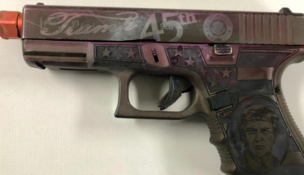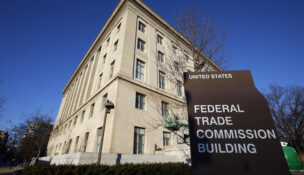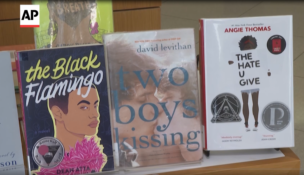US Supreme Court takes on reliability of eyewitness IDs
By: KIMBERLY ATKINS, BridgeTower Media Newswires//November 4, 2011//
US Supreme Court takes on reliability of eyewitness IDs
By: KIMBERLY ATKINS, BridgeTower Media Newswires//November 4, 2011//
Despite recent studies questioning the reliability of eyewitness testimony in criminal trials, the justices of the U.S. Supreme Court appear reluctant to provide special constitutional protections against such evidence, absent a claim that an identification was made under suggestive circumstances created by the police.
The case of Perry v. New Hampshire stems from a 2008 incident in which police were told that a man was breaking into vehicles in an apartment building parking lot. Officers arrived at the scene and found Barion Perry standing next to a car holding car stereo amplifiers. Perry told police that he was walking through the parking lot and found the amplifiers on the ground.
While one officer stayed with Perry, another went inside the apartment building to interview a woman who claimed to have witnessed the car break-ins. She told the officer that she saw a “tall black man” break into cars and steal amplifiers. When asked by police for a more detailed description, she pointed out her window and said it was “the man … standing with the police officer.”
The woman was later unable to make an identification from a photo lineup.
Perry was arrested and charged with theft. After a trial which relied largely on the witness’s testimony, Perry was convicted by a jury and sentenced to three to 10 years.
He appealed, arguing that the witness identification was made in suggestive circumstances that violated his due process rights. But the New Hampshire Supreme Court held that such claims can only be validly made when the suggestive circumstances are orchestrated by police.
The U.S. Supreme Court has previously extended due process protections to guard against the admission of unduly suggestive witness identification evidence when the suggestive circumstances are orchestrated by police. Here, the Court granted Perry’s petition for certiorari to consider whether such protections exist even absent intentional police conduct.
‘Magic’ of suggestiveness?
At oral arguments Wednesday, Richard Guerriero, a New Hampshire public defender, argued that the inherent unreliability of witness identifications made under suggestive circumstances such as seeing a subject talking to police, coupled with its strong persuasive effect on juries, presents a “unique danger” of a “miscarriage of justice.”
“It is that danger of misidentification which implicates due process and requires an evaluation of the reliability of the identification” even where the police did not create suggestive circumstances, Guerriero said.
“If it’s not limited to suggestive circumstances created by the police, why is unreliable eyewitness identification any different from unreliable anything else?” asked Justice Antonin Scalia.
“Eyewitness identification evidence is unique,” Guerriero replied, noting that misidentifications are “the leading cause of miscarriages of justice. Experience with the DNA exonerations that we’ve seen recently in the last 10 or 15 years have shown that.”
Justice Anthony Kennedy wondered if a ruling in Perry’s favor would hamstring police investigations.
“I don’t know what you want the police to do in this case,” he said.
“[The police] could have done a line-up procedure or a photo line-up procedure fairly promptly that would be distinct from and much more fair than the show-up at the scene,” Guerriero replied.
But Scalia seemed unconvinced that suggestive witness identifications need special protection.
“Normally you’d leave it to a jury” to decide, he said. “But you want us to say it has to be excluded and if it’s not you must retry the person. What is magic about suggestiveness as opposed to all of the other matters that could cause eyewitness identification to be wrong?”
Concern over ‘stacking the deck’ New Hampshire Attorney General Michael A. Delaney stressed that the Court has held that due process was implicated “only when the police arrange a confrontation to elicit a witness’s identification of a suspect and use unnecessarily suggestive techniques that skew the fact-finding process.”
Justice Sonia Sotomayor asked whether the fact that the witness pointed out the suspect before police asked her to was simply a lucky break for the prosecution.
“My suspicion is that at some point they would have asked the witnesses in the building and engaged in a show-up,” Sotomayor said. “What’s so different between intentionally doing the show-up and holding the defendant in the back yard standing there next to a police officer?”
“The difference is the role the police played,” Delaney replied. “What the Due Process Clause is concerned about is the role of the police in essentially stacking the deck, putting their thumb on the scale and skewing the fact-finding process.”
Nicole A. Saharsky, an assistant to the solicitor general arguing as amicus curiae in support of the state, argued that the Due Process Clause does not require that a whole category of evidence be excludable.
“Lie detectors [have] been taken away from the jury on a categorical basis, right?” asked Chief Justice John G. Roberts.
“There are some state rules of evidence that do that,” Saharsky acknowledged. “[But] the Constitution has enshrined the jury as the fundamental protector of liberty.”
A ruling from the Court is expected later this term.
Legal News
- Chicago man sentenced to prison after being caught with ‘Trump Gun’
- FTC bans non-competes
- Gov. Evers seeks applicants for Dane County Circuit Court
- Milwaukee man charged in dismemberment death pleads not guilty
- Democratic-led states lead ban on the book ban
- UW Madison Professor: America’s child care crisis is holding back moms without college degrees
- History made in Trump New York trial opening statements
- Prosecutor won’t bring charges against Wisconsin lawmaker over fundraising scheme
- Republican Wisconsin Senate candidate says he doesn’t oppose elderly people voting
- Vice President Harris to reveal final rules mandating minimum standards for nursing home staffing
- Election workers fear threats to their safety as November nears
- Former law enforcement praise state’s response brief in Steven Avery case
WLJ People
- Power 30 Personal Injury Attorneys – Russell Nicolet
- Power 30 Personal Injury Attorneys – Benjamin Nicolet
- Power 30 Personal Injury Attorneys – Dustin T. Woehl
- Power 30 Personal Injury Attorneys – Katherine Metzger
- Power 30 Personal Injury Attorneys – Joseph Ryan
- Power 30 Personal Injury Attorneys – James M. Ryan
- Power 30 Personal Injury Attorneys – Dana Wachs
- Power 30 Personal Injury Attorneys – Mark L. Thomsen
- Power 30 Personal Injury Attorneys – Matthew Lein
- Power 30 Personal Injury Attorneys – Jeffrey A. Pitman
- Power 30 Personal Injury Attorneys – William Pemberton
- Power 30 Personal Injury Attorneys – Howard S. Sicula











